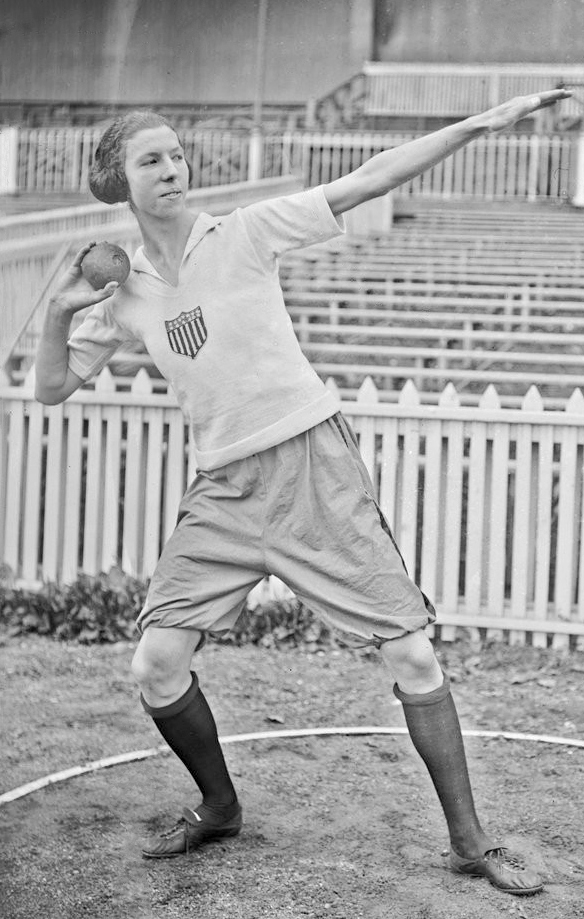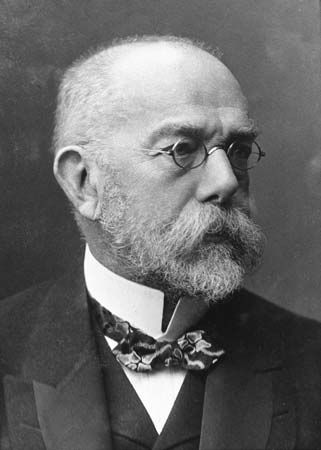The Comet Shoemaker–Levy 9 is first discovered.

In this striking image we see the comet fragments of Shoemaker-Levy 9.
Comet Shoemaker–Levy 9 was a comet that broke apart in July 1992 and collided with Jupiter in July 1994, providing the first direct observation of an extraterrestrial collision of Solar System objects. This generated a large amount of coverage in the popular media, and the comet was closely observed by astronomers worldwide. The collision provided new information about Jupiter and highlighted its possible role in reducing space debris in the inner Solar System.
The comet was discovered by astronomers Carolyn and Eugene M. Shoemaker and David Levy in 1993. Shoemaker–Levy 9 had been captured by Jupiter and was orbiting the planet at the time. It was located on the night of March 24 in a photograph taken with the 46 cm Schmidt telescope at the Palomar Observatory in California. It was the first comet observed to be orbiting a planet, and had probably been captured by Jupiter around 20–30 years earlier.
Calculations showed that its unusual fragmented form was due to a previous closer approach to Jupiter in July 1992. At that time, the orbit of Shoemaker–Levy 9 passed within Jupiter’s Roche limit, and Jupiter’s tidal forces had acted to pull apart the comet. The comet was later observed as a series of fragments ranging up to 2 km in diameter. These fragments collided with Jupiter’s southern hemisphere between July 16 and 22, 1994 at a speed of approximately 60 km/s or 216,000 km/h. The prominent scars from the impacts were more easily visible than the Great Red Spot and persisted for many months.
While conducting a program of observations designed to uncover near-Earth objects, the Shoemakers and Levy discovered Comet Shoemaker–Levy 9 on the night of March 24, 1993 in a photograph taken with the 0.46 m Schmidt telescope at the Palomar Observatory in California. The comet was thus a serendipitous discovery, but one that quickly overshadowed the results from their main observing program.
Comet Shoemaker–Levy 9 was the ninth periodic comet discovered by the Shoemakers and Levy, hence its name. It was their eleventh comet discovery overall including their discovery of two non-periodic comets, which use a different nomenclature. The discovery was announced in IAU Circular 5725 on March 27, 1993.
The discovery image gave the first hint that comet Shoemaker–Levy 9 was an unusual comet, as it appeared to show multiple nuclei in an elongated region about 50 arcseconds long and 10 arcseconds wide. Brian G. Marsden of the Central Bureau for Astronomical Telegrams noted that the comet lay only about 4 degrees from Jupiter as seen from Earth, and that although this could of course be a line of sight effect, its apparent motion in the sky suggested that it was physically close to it. Because of this, he suggested that the Shoemakers and David Levy had discovered the fragments of a comet that had been disrupted by Jupiter’s gravity.
Orbital studies of the new comet soon revealed that it was orbiting Jupiter rather than the Sun, unlike all other comets known at the time. Its orbit around Jupiter was very loosely bound, with a period of about 2 years and an apoapsis of 0.33 astronomical units. Its orbit around the planet was highly eccentric.
Tracing back the comet’s orbital motion revealed that it had been orbiting Jupiter for some time. It is likely that it was captured from a solar orbit in the early 1970s, although the capture may have occurred as early as the mid-1960s. Several other observers found images of the comet in precovery images obtained before March 24, including Kin Endate from a photograph exposed on March 15, S. Otomo on March 17, and a team led by Eleanor Helin from images on March 19. No precovery images dating back to earlier than March 1993 have been found. Before the comet was captured by Jupiter, it was probably a short-period comet with an aphelion just inside Jupiter’s orbit, and a perihelion interior to the asteroid belt.
The volume of space within which an object can be said to orbit Jupiter is defined by Jupiter’s Hill sphere. When the comet passed Jupiter in the late 1960s or early 1970s, it happened to be near its aphelion, and found itself slightly within Jupiter’s Hill sphere. Jupiter’s gravity nudged the comet towards it. Because the comet’s motion with respect to Jupiter was very small, it fell almost straight toward Jupiter, which is why it ended up on a Jove-centric orbit of very high eccentricity—that is to say, the ellipse was nearly flattened out.
The comet had apparently passed extremely close to Jupiter on July 7, 1992, just over 40,000 km above its cloud tops—a smaller distance than Jupiter’s radius of 70,000 km, and well within the orbit of Jupiter’s innermost moon Metis and the planet’s Roche limit, inside which tidal forces are strong enough to disrupt a body held together only by gravity. Although the comet had approached Jupiter closely before, the July 7 encounter seemed to be by far the closest, and the fragmentation of the comet is thought to have occurred at this time. Each fragment of the comet was denoted by a letter of the alphabet, from “fragment A” through to “fragment W”, a practice already established from previously observed broken-up comets.
More exciting for planetary astronomers was that the best orbital calculations suggested that the comet would pass within 45,000 km of the center of Jupiter, a distance smaller than the planet’s radius, meaning that there was an extremely high probability that SL9 would collide with Jupiter in July 1994. Studies suggested that the train of nuclei would plow into Jupiter’s atmosphere over a period of about five days.



